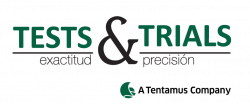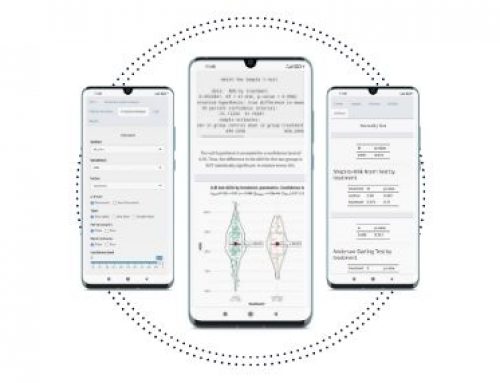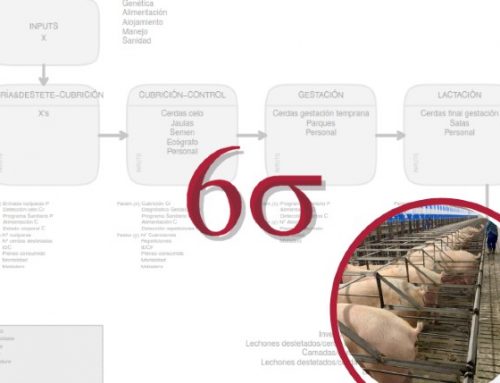Feeding Strategies to Manage Post-Weaning Diarrhea (PWD) in Piglets
Towards Zero Zinc Oxide (ZnO) supplementation at pharmacological doses in post-weaning piglets (PWD). This consolidated practice allows its efficient control, a condition exacerbated by Escherichia coli F4 infections, but also has many objections.
The post-weaning diarrhea (PWD) in piglets is a multifactorial digestive disease, characterized by the presence of diarrhea in the first weeks of weaned piglets. A very common practice to deal with this pathology is the pharmacological supplementation of Zinc Oxide (ZnO).
Zinc (Zn) is one of the most important trace elements in animal nutrition.
Zinc (Zn)presence ensures the activity of several enzymes involved in cellular signaling, digestion, cellular respiration, and nucleic acid metabolism. Zinc deficiency has been correlated with growth retardation, lower appetite, worsening of feed conversion rate, and skin complications.
In the next image, you will find a summary of the beneficial effects and mechanisms of action of zinc oxide in post-weaning piglets.
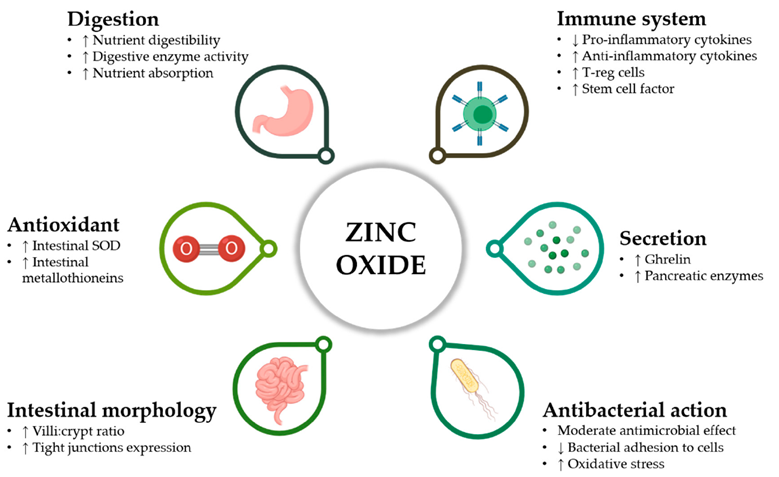
The fine print on the use of ZnO in the management of post-weaning diarrhea in piglets
Despite this potential, the actual effect of ZnO against E. coli F4 is moderate. Considering that the low diarrhea occurrence in ZnO-supplemented piglets is recurrently associated with a persistent fecal excretion of E. coli, it is realistic that mechanisms of action different from a direct antimicrobial activity do exist for ZnO.
Furthermore, the environmental impact of ZnO and some new emerging threats are posing serious questions to the sustainability of its extensive utilization. This review is an analysis to novel nutritional approaches and provides a comprehensive framework for ZnO utilization and its broad mode of action. We have attached the original document at the end of this post.
Risks related to pharmacological ZnO utilization in post-weaning piglets.
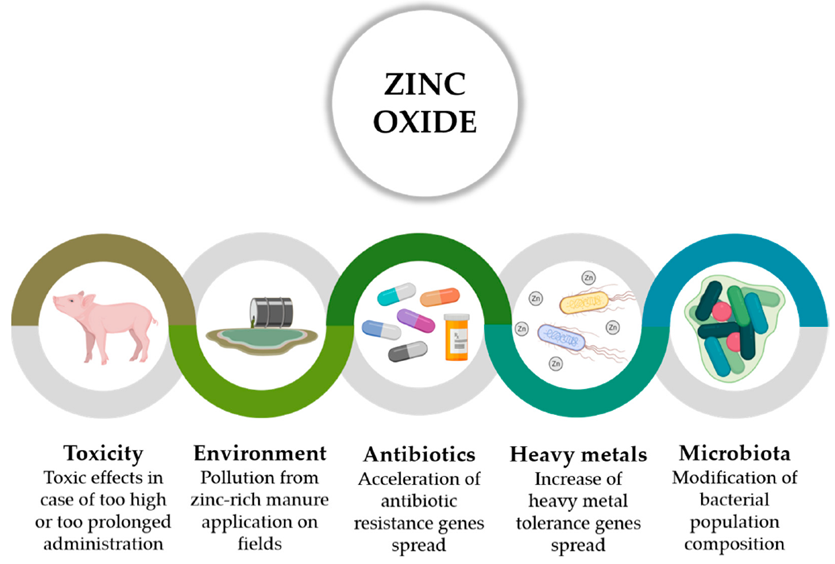
What other alternatives to deal with this pathology are?
Promising results can be obtained by adjusting diet composition or employing organic acids, natural identical compounds, polyphenol-rich extracts, prebiotics, and probiotics. This post aims to spread how the adoption of holistic strategies such as combining good management practices our new feeding alternatives are capable of minigating Escherichia coli F4 infections and/or lowering ZnO utilization.
Many non-feed and feed strategies have been investigated to manage PWD and E. coli FR infections. For the first group, the following factors contribute to the establishment of PWD: poor environmental conditions, a deterioration in husbandry hygiene levels, depression levels, genetic factors, and so on.
In the following table, you will find some advantages and disadvantages of the main ZnO feeding alternatives for managing PWD and Escherichia coli F4 infections in weanling piglets.
| ZnO Feeding Alternatives | Advantages | Disadvantages |
|---|---|---|
| Low protein diets | ↓ proteolytic bacteria population ↓ pathogenic E. coli ↓ PWD symptoms ↓ pro-inflammatory cytokines | ↓ pig productivity |
| High fiber diets | ↓ PWD symptoms ↓ E. coli shedding ↓ E. coli adhesion ↑ SCFA production in digesta ↓ retention time of digesta | Few comparisons with pharmacological ZnO |
| Organic acids | Powerful antimicrobial activity Potential complete pharmacological Zn elimination ↑ gastric acidity ↑ nutrient digestibility ↑ growth performance ↓ PWD symptoms ↓ harmful coliforms ↓ inflammation ↑ intestinal morphology | Lack of comparisons with pharmacological ZnO Different activities between acids |
| Essential oils and nature identical compounds | Powerful antimicrobial, antioxidant, and anti-inflammatory activity ↑ growth performance ↑ diet digestibility ↓ PWD symptoms ↓ harmful coliforms ↓ bacterial virulence gene expression ↑ intestinal morphology | High variability in efficacy among different EO and molecules |
| Polyphenol-rich extracts | Considerable antimicrobial activity Ion chelating capacity High antioxidant activity ↓ PWD symptoms ↓ bacterial virulence gene expression ↓ bacterial adhesion to enterocytes ↓ bacterial toxin action ↑ intestinal morphology ↑ digestive enzymes activity | Few studies comparing polyphenols to pharmacological ZnO Polyphenols mechanism of action not yet fully elucidated |
| Antimicrobial peptides | Powerful antimicrobial activity ↓ bacterial resistance acquisition ↓ bacterial adhesion ↑ growth performance ↓ PWD symptoms ↑ intestinal morphology ↓ harmful coliforms ↑ immune response parameters | Lack of comparisons with pharmacological ZnO Need to investigate AMP pharmacokinetics |
| Egg yolk antibodies | ↑ growth performance ↓ PWD symptoms ↓ bacterial adhesion to enterocytes | Lack of comparisons with pharmacological ZnO High cost Stability issues in the gastrointestinal tract |
| Spray-dried plasma | ↑ growth performance ↓ PWD symptoms ↓ E. coli shedding ↑ intestinal morphology ↓ pro-inflammatory cytokines | Lack of comparisons with pharmacological ZnO High cost Complex production Potential presence of pathogens in SDP |
General conclusions
Es de alta importancia encontrar el mejor método para controlar el crecimiento, patogenicidad y virulencia en todas las etapas de la diarrea en el post-destete de los lechones. Por último, averiguar qué procedimiento permitirá gestionar la fase de destete de lechones siendo respetuosos con el medio ambiente, el bienestar animal y bioseguridad.
It is of the utmost importance to find the optimal method to control growth, pathogenicity, and the virulence of PWD. Lastly, to figure out the best procedures to manage the weaning phase for piglets with pioneering environmentallyfriendly strategies, animal welfare and biosecurity.
Did you like this article? Sign up to our newsletter and we will notify you when we publish a new post!
